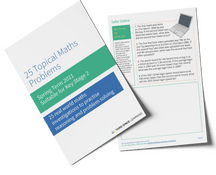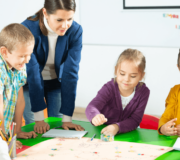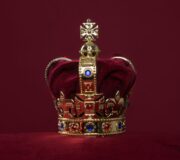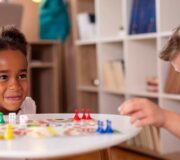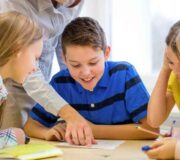International Women’s Day Maths Activities: Topical Maths Activities For Your Class
Inspired by 7 fantastic female mathematicians, here are some great International Women’s Day maths activities ready for KS2.
International Women’s Day on 8th March offers the opportunity to highlight the phenomenal work women have done in maths, and to address one of the biggest issues facing STEM subjects, gender-inequality. And all in a way that fits the curriculum!
This article is part of our series of KS2 maths problem solving investigations based on real life events in primary school. Others include World Book Day maths, Easter maths activities and Christmas maths activities.
KS2 Topical Maths Problems for Spring Term
20 maths investigations linked to calendar dates, to practise reasoning and problem solving with your class
Download Free Now!Gender inequality in maths and engineering
In her 2013 Guardian post ‘Why are there so few female Maths professors in UK universities?’, Lucy Ward states ‘here’s any easy sum: if 94% of Maths professors in British universities are men, what percentage are women?’.
The answer is of course telling, and today there has been little improvement. The Women’s Engineering Society, offers some useful statistics on women in STEM in the UK, and it’s not great. For example:
‘Women make up 16.5% of all engineers‘. Though this is a 6% rise since 2010, there’s still a long way to go.
Maths and engineering – one and the same
Whilst Engineering degrees are a typical route into Engineering Careers, often the degree requires a high level of aptitude in Maths. In an article on Maths degrees, top universities.com describes how those with a proficiency in mathematics – particularly applied Maths – ‘are good at helping to solve real-world, physical problems, and can be found working in mechanical, structural, aeronautical, and many other realms of engineering’.
Only 9% of these people will be women, despite statistics from National Girls Collaborative Project that show how ‘female and male students perform equally well in mathematics and science on standardised tests’.
So – we have a problem.
More women in maths? It starts in the classroom
The idea that our young learners may feel they should not approach or are not suited to a particular field of work is heartbreaking. As teachers, we want our pupils to feel they can do anything. What we definitely don’t want is for them to feel they cannot do something because of their gender.
Our female learners should never feel like they can’t – or shouldn’t – do Maths because it’s a ‘boy’s subject’. These perceptions always start at a young age which means changing them must start in the classroom.
With this in mind, we have put together 7 biographies of the incredible and inspiring women who contributed hugely to mathematics, with linked international women’s day activities for you to try in the classroom.
1. Mary Somerville
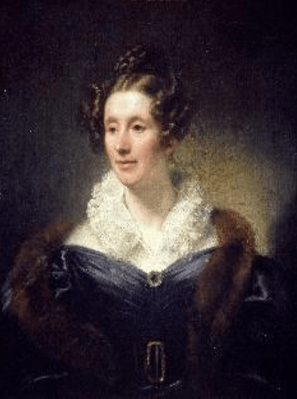
Mary Somerville was born at a time when it wasn’t seen as important to give girls a good education – 1780. Mary was very interested in Maths and tried to study whenever she could. She taught herself at home and spent time learning with friends and family members.
Mary’s second husband William was also interested in science and encouraged her to pursue her studies. In 1827 Mary was asked to translate a book by the French mathematician, Pierre Laplace. Her work was an immediate success.
After this, Mary continued to do lots of important research for the rest of her life and was given many honours for her work. Her work was so important and famous that Somerville College at Oxford University is actually named after her!
Mary Somerville maths activities
- In 2016 Scotland held a vote to decide what picture should appear on their new £10 notes. 11,560 people voted in total. 2,135 votes went to James Clerk Maxwell, 5,149 votes to Thomas Telford and the rest to Mary. How many votes did Mary receive? (Answer: 4,276)
- Mary’s picture is on some £10 notes in Scotland. If there are twenty three thousand five hundred and forty £10 notes with her image on, what is the total value of the notes? (Answer: £235,400)
2. Augusta Ada Byron (Ada Lovelace)
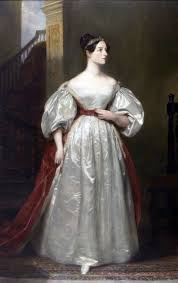
Augusta Ada Byron (later named the Countess of Lovelace) was the daughter of a famous poet and rebellious figure, Lord Byron. Augusta never knew her dad, however, as he left England after a scandal around the time she was born.
Augusta’s mother knew she didn’t want her daughter to grow up to be as unstable and emotional as her father, so she encouraged Augusta to study Maths.
Augusta was incredibly gifted at Maths and as an adult worked with Charles Babbage to translate an Italian memoir. The memoir was about an ‘Analytical Engine’ (a machine that could do simple maths – one of the first computers). Augusta, however, did way more than just translate the memoir. She created her own version of notes for the machine and even included a way to calculate more difficult equations. This is now understood to be one of the world’s first computer programmes.
When Ada was a teenager, she was mentored by none other than Mary Somerville!
Augusta Ada Byron maths activities
- Ada translated a famous mathematician’s article from Italian into English. It took her 9 months to finish the translation. If the article was originally 324 pages long, how many pages did she translate on average each month? (Answer: 36)
- Ada wrote the first ever computer programme in 1840. The computer was not invented until 1943. How many years before the invention of the computer did Ava write her programme? (Answer: 103)
3. Emmy Noether
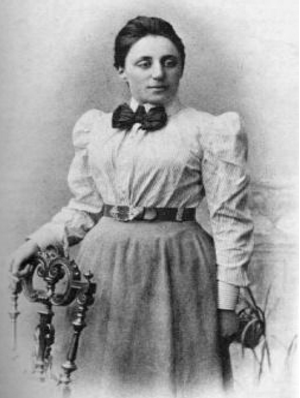
Emmy Noether, born 1882, was widely thought of as one of the most important Mathematicians ever. Even famous genius Albert Einstein once said Emmy was ‘the most significant creative mathematical genius since the higher education of women began’.
She grew up in Germany in a time when women weren’t thought of very highly and had her education delayed because of rules against women studying Maths at university. She was very, very clever though and did eventually get a PhD in algebra.
She went on to become a Maths professor and developed many mathematical rules that led to other mathematicians – like Einstein – being able to advance maths even further. We would as smart a society today if it weren’t for the work of Emmy Noether!
Emily Noether maths activities
- In 1915 Emmy Noether started working at Gottingen University in Germany. There were only 1,529 students. Today there are 26, 000 students. How many more students attend the university today than in 1915? (Answer: 24,471)
- There were no female students in 1915. Now, in 2019, the ratio of male:female students is 50:50. If there are 26 000 students, how many are female? (Answer: 13,000)
4. Florence Nightingale
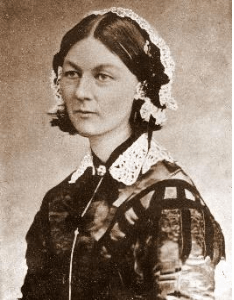
You might have heard of Florence Nightingale referred to as ‘the lady with the lamp’. She is famous for being a nurse who was full of compassion and the founder of modern nursing. What is less well known is that Florence was a statistician who used her work to hugely cut death rates during war.
When Florence went to be a nurse in the Crimean war she used statistics to show that lots of the soldiers were dying due to the conditions of the hospitals, rather than from fighting. Florence’s use of statistics helped to show government’s why people were dying. As a result she helped reduce mortality rates in both the army and at home.
In particular she developed lots of innovative graphs and charts which made statistics easy to understand for politicians. Before this time it was not common to represent statistics in this way.
Florence Nightingale’s work is so important that for nearly 20 years her image was on the back of the British £10 note.
Florence Nightingale maths activitties
- In 1858 Florence Nightingale wrote a book about looking after wounded and sick soldiers. It was 820 pages long. If 25% of the pages had diagrams or charts on, how many pages would this be? (Answer: 205)
- In total Florence wrote 200 articles or books and you can still buy lots of these today! If you bought “Notes on Nursing” for £28.62, “Letters from the Crimea” for £14.99 and “To her Nurses” for £8.45 How much would it cost in total for the three books? (Answer: £52.06)
- How much change would you have from £100? (Answer: £47.94)
5. Dorothy Johnson Vaughan
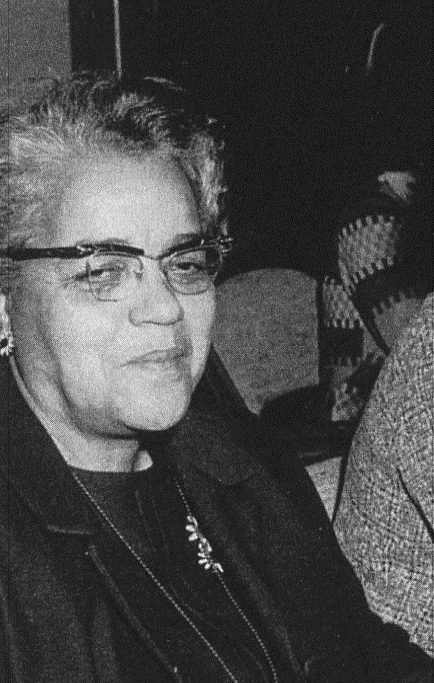
Dorothy Johnson Vaughan was an African American mathematician and computer programmer who worked for the National Advisory Committee for Aeronautics (NACA), and NASA. She contributed greatly to the early stages of the American space programme.
She was considered a “human computer” as she performed complicated computations and analysed data for aerospace engineers. She was the first African American manager at NACA (which later became NASA).
Dorothy Vaughan maths activities:
- On the trip to the moon, the astronauts took 180 pictures. On their return to Earth they separated the pictures between all three astronauts equally, but only after giving other members of the team 30 pictures. How many pictures did each astronaut get?
- Dorothy had to work out 4,320 different calculations to get the astronauts to the moon. If each calculation took 5 minutes, how long did she spend working out the answers?
- One of Dorothy’s calculations was about the weight of the astronauts. If one astronaut weighed 80kg, one weighed 91kg and one 75kg, how much did all three astronauts weigh together?
6. Katherine Johnson
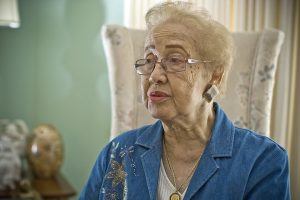
Katherine Johnson is an American mathematician, physicist and space scientist who contributed greatly to the USA’s aeronautics and space programmes, particularly in electronic computers at NASA. She calculated the trajectory for Project Mercury and the Apollo 11 flight to the moon.
She was presented with the Presidential Medal of Freedom by Barack Obama in 2015 due to her pioneering example of African American women in STEM.
Katherine Johnson maths activities
- If the rocket ship that Katherine helped get to the moon had to travel at 7 miles per second to break free of the Earth’s gravitational pull, and the ship had travelled for 15 seconds, how far will it have gone?
- It costs £1,400,500 to train one astronaut, and there were 3 on the rocket ship that Katherine helped send to the moon. How much did it cost to train all of the astronauts on that flight?
- A rocket ship travels 10 miles per litre of rocket fuel. How many litres of rocket fuel are needed for a 250 mile trip?
7. Maryam Mirzakhani
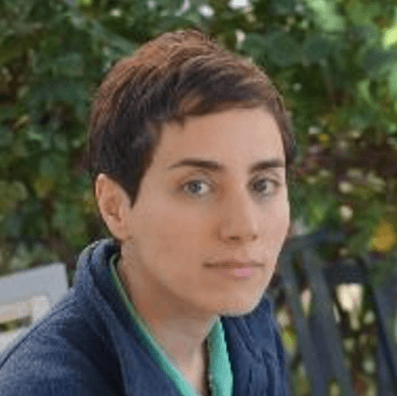
Maryam Mirzakhani was one of the best mathematicians in the world.
While a teenager, Mirzakhani won gold medals in the 1994 and 1995 International Mathematical Olympiads for high-school students, getting a perfect score in 1995. In 1999 she received a degree in Maths from the Sharif University and five years later she earned a PhD from Harvard University.
In 2014 she became the first woman and the first Iranian to be awarded the Fields Medal (one of the highest awards in maths). She got these for her “rare combination of superb technical ability, bold ambition, far-reaching vision, and deep curiosity”.
Maryam Mirzakhani maths activities
- When she was a teenager, Maryam took part in lots of Maths competitions at school. In one competition each round had a maximum 235 points that could be scored. If there were 12 rounds, how many marks were available to win in total? (Answer: 2,820 points)
- If Maryam got 80% of the questions right how many points did she get? (Answer: 2,256 points)
- Maryam has done lots of work in shape and space. She has to understand a lot about angles. Can you calculate the angle missing in the diagram below? (Answer: 75°)
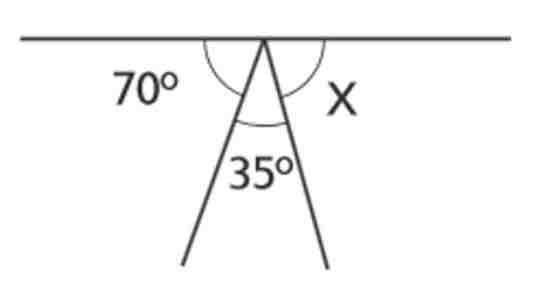
A reporter asked Maryam what she likes most about Maths. She said:
“Of course, the most rewarding part is the “Aha” moment, the excitement of discovery and enjoyment of understanding something new – the feeling of being on top of a hill and having a clear view.”
For more detail on these inspiring women and others, check out 9 Famous Female Mathematicians Who Have Changed the World.
More problem solving and reasoning articles:
- Ultimate Guide to Maths Problem Solving Techniques
- Maths Investigations: How To Develop Mathematical Reasoning
- 35 Year 6 Maths Reasoning Questions
DO YOU HAVE PUPILS WHO NEED MORE SUPPORT IN MATHS?
Every week Third Space Learning’s maths specialist tutors support thousands of students across hundreds of schools with weekly primary school tuition designed to plug gaps and boost progress.
Since 2013 these personalised one to one lessons have helped over 150,000 primary and secondary students become more confident, able mathematicians.
Learn about the emphasis on building a positive maths mindset or request a personalised quote for your school to speak to us about your school’s needs and how we can help.

